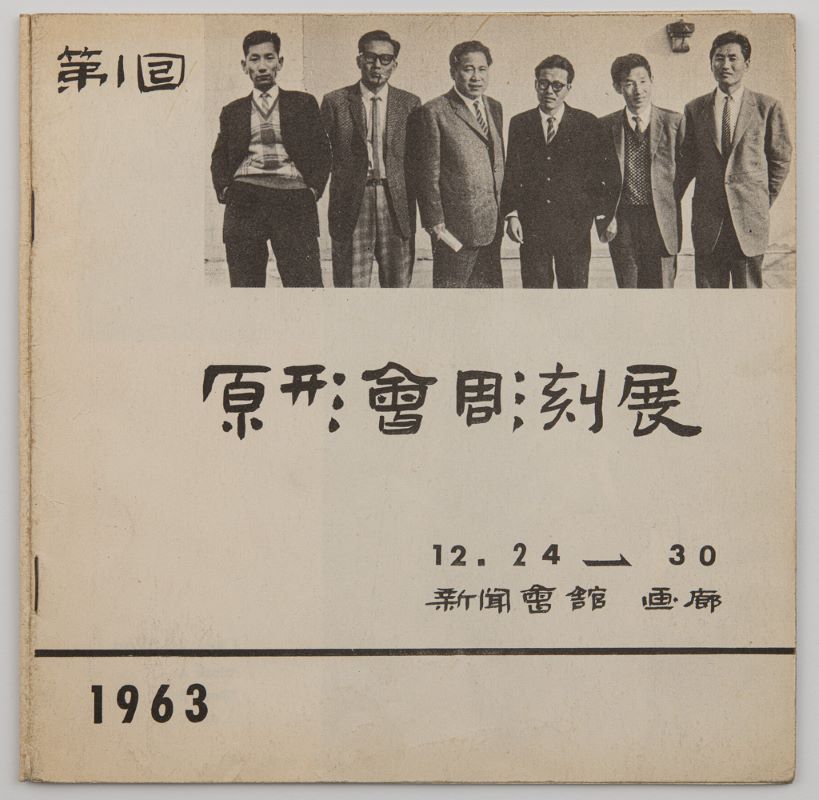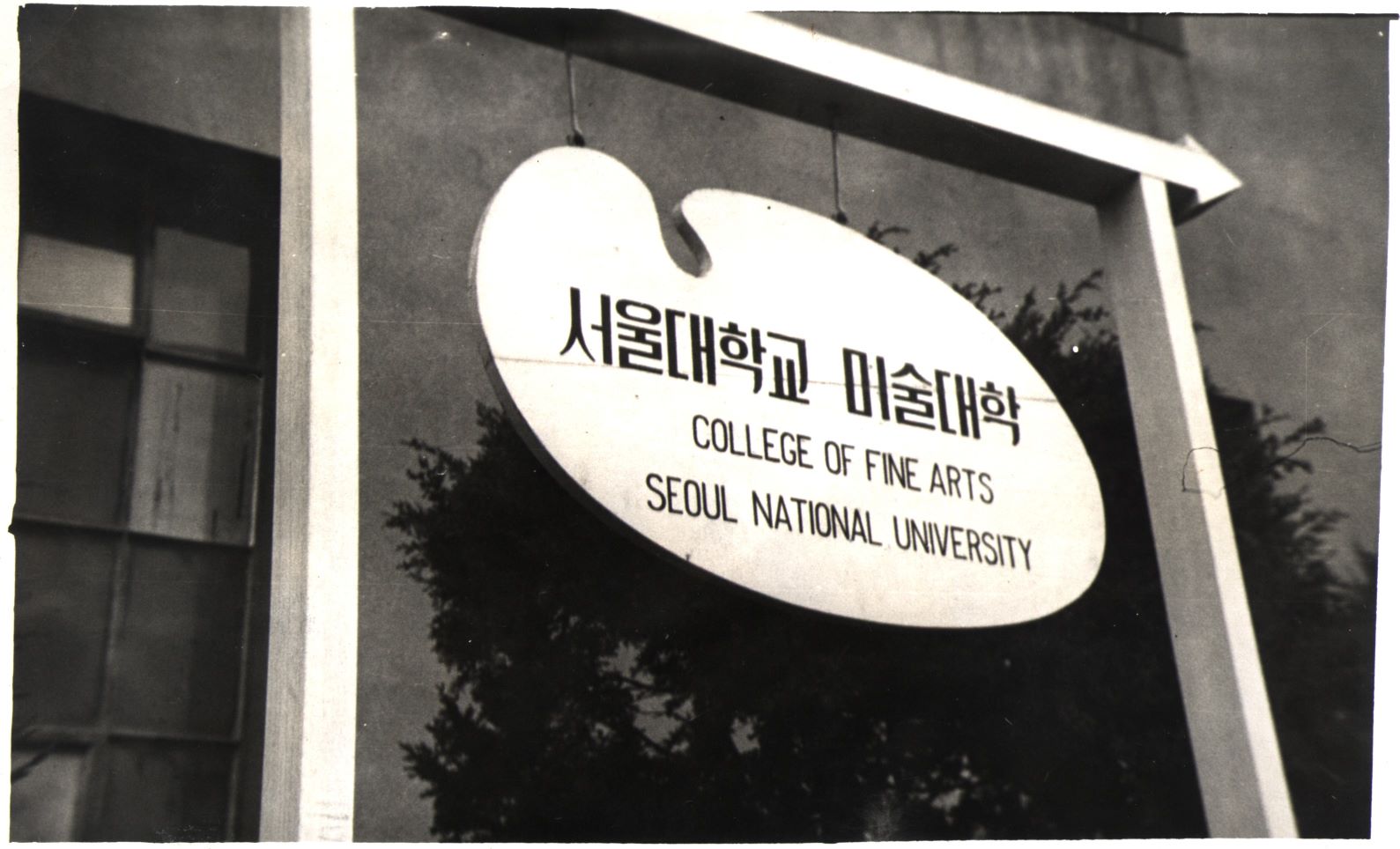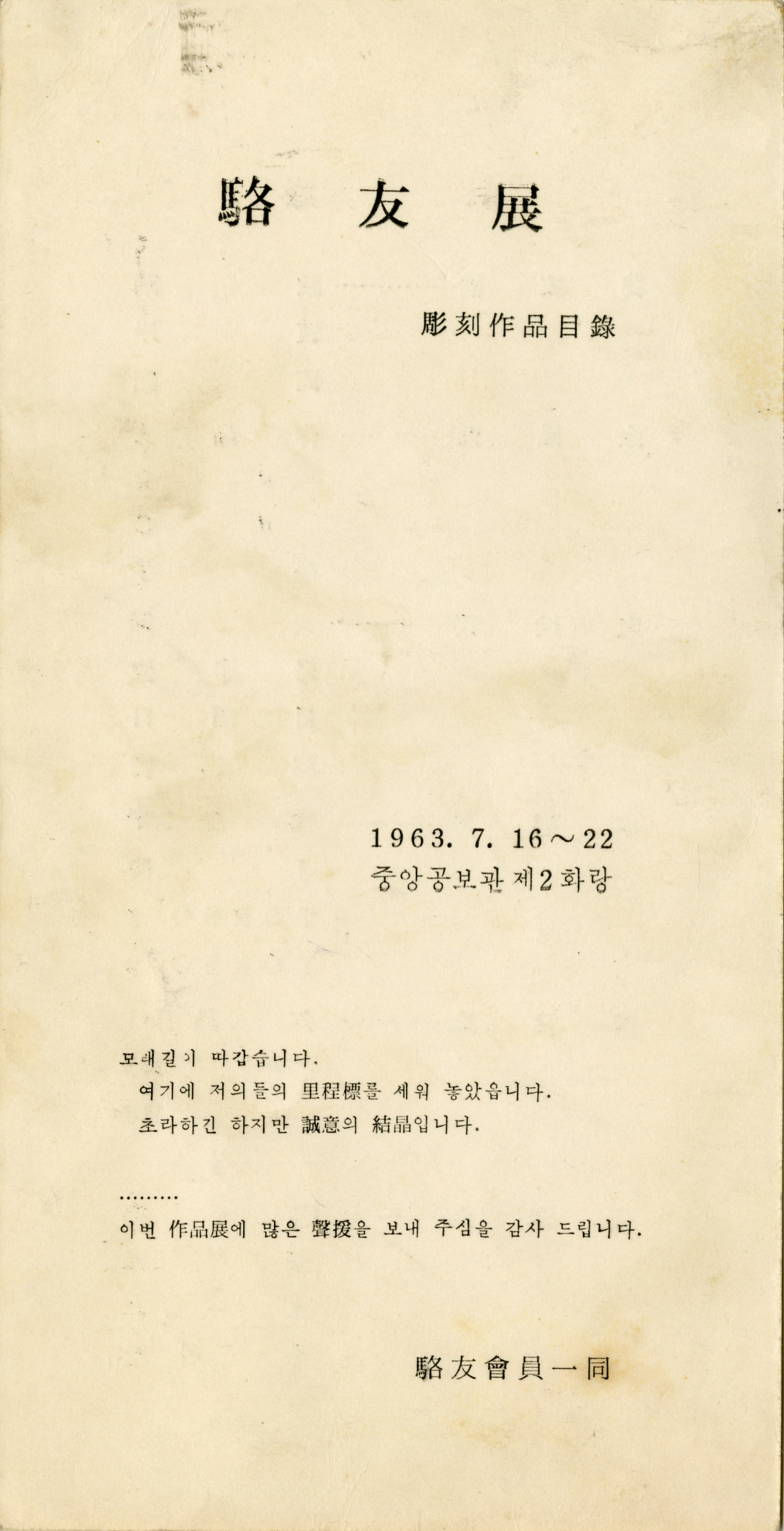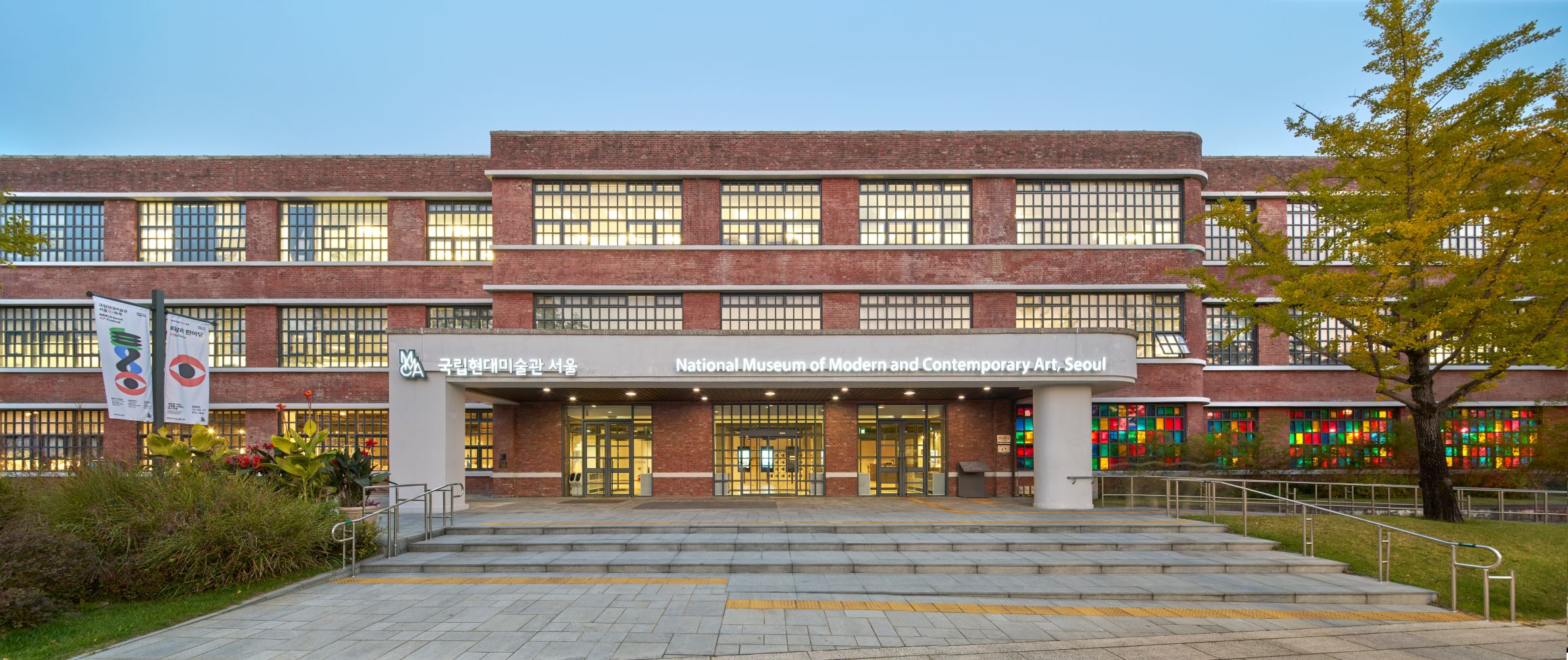
Third Sculpture Society Exhibition, Leaflet, 1971, MMCA Art Research Center Collection
Third Sculpture Society
* Source: Multilingual Glossary of Korean Art by Korea Arts Management Service
Related
-

Won-hyung Club
A group formed in by 1963 by established sculptors who were all alumni of Seoul National University and Hongik University, and advocated a “sculptural philosophy of avant-garde action.” The membership consisted of artists such as Kang Taisung, Kim Youngjung, Kim Younghak, Kim Chanshik, Park Chongbae, Oh Jong-uk, Lee Seung-taek, Chun Sangbum, Cho Sungmook, and Choi Kiwon. The group held its inaugural exhibition in 1963 at the Sinmunhoegwan Gallery, and participated in the Joint Exhibition of Korean Contemporary Sculpture (held in 1970 at the National Museum of Modern and Contemporary Art) alongside the Nakwoo Sculptors Society, the 3rd Sculptors Society, and the Korean Modern Sculptors Society.
-

College of Arts at Seoul National University
The College of Fine Arts of Seoul National University is located in Sillim-dong, Gwanak-gu, Seoul. According to the Decree on the Establishment of Seoul National University, the College of Art including the Department of Fine Arts and the Department of Music was founded in August 1946 at Seoul National University. The Department of Fine Arts consisted of sub-departments of Painting I, Painting II, Sculpture, and Design. It was organized by Chang Louis Pal and Lee Soonsuk. Chang Louis Pal had served as head of the Education and Management Bureau in the U.S. Army Military Government in Korea (USAMGIK) in Korea since December 1945. Lee Soonsuk assumed practical tasks as an advisor to the art section of the USAMGIK from 1946 when the Education and Management Bureau was changed to the Ministry of Culture and Education. In 1946, there were nine faculty members at the Department of Fine Arts in the College of Art: Chang Louis Pal, Kim Yongjun, Gil Jinseop, and Lee Jaehun as professors; Yun Seung-uk and Lee Soonsuk as associate professors; and Kim Whanki, Chang Woosoung, and Lee Byeonghyeon as assistant professors. However, after the incident of Korean students and professors’ protest against the U.S.’s attempt to merge several colleges and universities into a single university, Kim Yongjun, Gil Jinseop, and Kim Whanki resigned. In 1954, the College of Art was reorganized into the College of Fine Arts with three departments of painting, sculpture, and applied art. The Department of Aesthetics, which had temporarily belonged to the College of Fine Arts since 1948, was transferred to the College of Liberal Arts and Sciences in 1960. In 1963, according to the relocation plan of the Seoul National University main school building, the College of Fine Arts was moved to the former veterinary department building in Yeongeon-dong, Jongno-gu. In 1972, it was moved to the liberal arts department building in Hagye-dong, Seongbuk-gu, and then in 1976, to the current Gwanak campus. In 1981, the three departments of painting, sculpture, and applied art were reorganized into the five departments of Eastern painting, Western painting, sculpture, crafts, and industrial art. In 1989, the Department of Industrial Art was renamed the Department of Industrial Design, and in 1999, the Department of Crafts and the Department of Industrial Design were merged into the School of Design. Currently, the College of Fine Arts consists of the Department of Oriental Painting, Department of Painting, Department of Sculpture, Department of Craft, Department of Design, and Interdisciplinary Programs.
-

Nakwoo Sculptors Society
A group formed in 1963 by sculptors who were alumni of the Seoul National University College of Fine Arts. The name “Nakwoo” combines “Nak” from Naksan, a mountain behind the college building in Dongsung-dong, and “Woo (éÒ),” which means friend. The group began accepting sculptors who were not alumni of Seoul National University in 1984, and the name changed to the Nakwoo Sculptural Society.
Find More
-

National Museum of Modern and Contemporary Art, Korea (MMCA)
A national museum established in 1969 that researches, collects, and exhibits modern and contemporary art. As of 2018, there are branches in Gwacheon, Deoksugung, Seoul, and Cheongju. When first established, the National Museum of Modern Art (now MMCA) was located within Gyeongbokgung palace. In 1973, the museum moved to the East Wing of the Deoksugung Seokjojeon building. Then, in 1986, the museum moved to its current location in Gwacheon, to occupy a new building equipped with an outdoor sculpture exhibition space, and has since opened a new chapter in Korean art. The perceived need for a space to focus specifically on Korean contemporary art led to the establishment of further site, the National Museum of Contemporary Art, Deoksugung in 1998. In November 2013, a further demand for contemporary art exhibitions led to the establishment of another Seoul branch being created in the Defense Security Command building in Sogyeok-dong, Jongno-gu, which has since its inception engaged in multifaceted exhibitions of both domestic and overseas contemporary art. Also, as a further component of the MMCA complex, a disused tobacco factory in Cheongju was remodeled to provide a home to the National Art Storage Center.
-

Korean Contemporary Sculpture Society
An art organization formed in 1969 by alumni of the Hongik University Department of Sculpture, including Kim Chanshik, Choi Kiwon, Kim Youngjung, Lee Seung-taek, Park Suk-won, and Cho Sungmook. The society advocated for “a site of the new generation, a turbulent globality,” and it sought to experiment with sculpture using different styles and content to reflect the changes of the time. After the inaugural exhibition 1969 at Press Center of Korea Gallery, the group held one or two exhibitions each year, choosing a young artist and providing support so that he or she may hold an exhibition.
-

Modern and Contemporary Sculpture
The term “modern and contemporary sculpture” refers to sculptural works that go beyond conventional materials such as wood, marble, and bronze and the materialization of traditional realism, and adopts instead non-figurative representations and new materials from the industrialization era. As the development of Neo-dada, Pop Art, Minimalism, Land Art, and Conceptual Art gradually diminished the importance of genre and medium in the second half of the twentieth century, modern and contemporary sculpture became increasingly marginalized.






